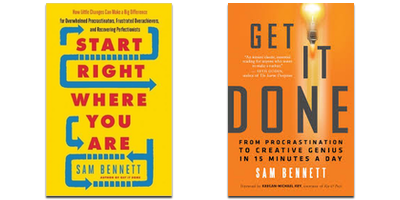
We love the story of life as a road. (Success is a ladder. Time is ever marching forward.)
But we know it’s not true.
We are on shifting sands, sliding forward and backward and sideways and diagonally in our thinking, our feeling, our learning and our lives.
Time swirls about us endlessly; effortlessly sweeping us back to That Day in the Third Grade…That Picnic by the Lake…That Long and Horrible Night…no, certainly time is the most unreliable of all the unreliables.
If we think of our lives as being linear, we cheat ourselves out of the fullness of our experience.
Plus, it’s that foolish linear thinking that leads to self-immolating thoughts like, “I should be more successful by now” and “Look, that person is more successful than I am.”
We know these thoughts are lies, too, but if you only measure by the clock it is all too easy to slip those lies into your pocket and carry them around as part of your belief about yourself.
The more we learn about our art (our love), the less we know.
The longer we live on this earth, the more the years seem to pass in a day.
As our fortunes rise and fall, the more we recognize that money and status are no more accurate a marker of success than a new crop of tomatoes or a big hug from an eight-year old.
Today, challenge yourself to notice the ways in which your life is a gyre, moving in many looping directions all at once. And how that is good and meet.
The world needs your art.

It is not possible to lose 30 pounds.
It is not possible to write a book.
It is not possible to clear out all the clutter.
You know why?
Because it is only possible to lose a few ounces a day.
And it is only possible to write a sentence or two — maybe a few pages.
It is only possible to clear a bit of the room at a time.
This may seem like just word play, but stick with me here — because I think this is important for two reasons.
1) The Goal Cannot Be Achieved All At Once
Especially if you have a BIG goal, you may have put off working on it because…well, it just seems too big.
It’s so big that you don’t know where to even start.
It’s so big that you doubt you can complete it.
It’s so big that you question your worthiness, your credibility, your right to even attempt such a thing. (The phrase, “Who do I think I am?” may show up here.)
But when you remember that it is not the BIG goal that needs to be accomplished, but rather just the immediate step that’s right in front of you….
Well, that feels much better, doesn’t it?
(Need a suggestion for what one immediate step might be? Try picking one action that will take less than 15 minutes and is easily within your budget.)
And here’s some even better news:
2) The Goal Is Not a Destination
You may have noticed that sometimes you DO complete a big project, and you end up feeling sort of….deflated.
Depressed.
That post-Christmas let-down feeling.
Because you thought you were done.
You thought that once you achieved your goal you would be complete – and that something would change.
But once you lose 30 pounds, you still have to maintain all the discipline and self-love that got you there.
And once you complete your manuscript, it’s not as though you are done writing.
And even if every bit of clutter gets swept away from your place, it’s only a matter of time until more clutter creeps in.
This is not failure.
This is process.
So you might find it comforting that you are mid-process on just about everything.
That means it’s not too late to take the next step.
It’s not too late to begin again.
It’s not too late to delight the world with your art.

“…Because you told me I was a stuntwoman and I believed you…” Painting by Lesley Perdomo
Allot Fifteen Minutes a Day to Your Project
If I could actually make you do stuff, the first thing I would get you to do is to spend fifteen minutes each and every day working on your project.
As it happens, you are the agent of change in your life, and I can’t really make you do anything.
But I strongly urge you to make this daily commitment to your project.
Do fifteen minutes every morning
— before you check your email, before you check your email, before you check your email…working on your project.
You will need an iron will to resist the siren call of the Internet, but it’s worth it.
Whatever’s out there can wait while you put yourself first for just a few minutes.
So get out your kitchen timer, or use the timer on your cell phone (in which case you can select an alert sound that you particularly enjoy), and even if you just sit still for fifteen minutes, you will profit.
I’ve heard from my students with attention deficit disorders that using a timer is an especially useful focusing ritual.
You will be amazed by how much work you can get done in fifteen minutes. You will be flat-out astonished by how much progress you make by putting in fifteen minutes a day, seven days a week, for a week, for a month, for three months, for a year.
Intellectually, this makes perfect sense. You know that if you practiced guitar every day for fifteen minutes, before long you’d be a better guitar player.
If you spend fifteen minutes a day writing a novel, eventually you will have written a novel.
If you spend fifteen minutes a day working on your abs, pretty soon you’ll have strengthened your core.
But emotionally this strategy doesn’t feel like it will work. It feels too small and too half-baked.
It may also trigger some feelings of rebellion, anger, despair, or fatigue. Sometimes those feelings show up right when you’re on the verge of a breakthrough.
You might want to think of this as your Daily Fifteen Minutes of Fame.
It ’s your chance to treat yourself like a famous artist for fifteen minutes every day.
After all, would a famous artist have any trouble claiming this small amount of time for herself ? Of course not.
Maybe you’re thinking, “Okay, Sam, but how do I go about this fifteen-minute thing?” Here ’s what I recommend:
Your Daily Fifteen Minutes of Fame — the Why
Quickly — without pondering — close your eyes for a moment and ask yourself, “What does this project represent for me? What value of mine does it represent?” and just let the answer bubble up from inside.
Maybe your answer will be “freedom” or “joy” or “self- expression” or “love” or “escape from the cubicle” or “to prove everybody wrong” — whatever word or phrase brings a little smile to your face is the right one.
You might even make yourself a little sign with your word or phrase on it and post it on or near your timer. (You could even grab a paint pen and decorate your kitchen timer if you were so inclined — a bit of glitter and glue, anyone?)
Your Daily Fifteen Minutes of Fame — the What
Working swiftly, brainstorm a list of fifteen-minute tasks.
Include a wide variety, since some days you might wake up feeling bold and want to tackle something brave such as “entering poetry contest,” and on others you’ll feel quiet and shy and want to do something simple like doodling or daydreaming. With this list at hand, you can quickly select the task that matches your mood.
For example, if I were writing a play called Romeo and Juliet, my list of fifteen-minute tasks might look something like this:
• Write a quickie character sketch of the nurse.
• Research poisons and sleeping draughts.
• Work on the balcony scene.
• Call agent.
• Brainstorm titles (Capulet vs. Montague, Why Fifteen-Year-Old
Girls Should Not Be Allowed to Go Dancing Unchaperoned )
• Write an author’s bio for the back cover.
• Double-check penalties for dueling.
• Write a blog post about doing the wrong thing for the right reasons.
• Research whether a rose by any other name really would
smell as sweet.
Your Daily Fifteen Minutes of Fame — the When
I usually suggest working in the morning, just because getting stuff out of the way first thing seems to work for a lot of people, including myself, but you might find that working after school works well (family homework time?) or just before bedtime.
Some people like to work in the middle of the night. Experiment.
LUNCHTIME PLAYS
My friend Emilie Beck is an award-winning playwright and theater director, and once she wrote a play (two plays, actually) in twenty-minute increments.
She had two small boys at home and a very demanding full-time job, and twenty minutes each day during her lunch hour was truly the only time she had.
It was not her preferred method of working, to be sure, but she made the best of it.
She found not only that she was able to do some great work but also that the action of writing every day helped remind her of her life goals, and kept her in touch with her artist-self, which was, I imagine, in danger of getting temporarily swallowed up by her mommy-self and her executive-self.
LESLEY’S STORY (In her own words)
I will be honest, I didn’t believe you at first. You were so adamant about how only fifteen minutes a day can help you complete a project. “Yeah, right,” kept sounding in my head. It was that same voice that always held me back from starting a project because I never knew where to start.
Whether I was starting a necklace or a painting, I always felt that if I started it, then I would have to finish it right then and there. That is a lot of pressure, so I would sometimes just shrug off some great ideas.
I figured I had nothing to lose by following your advice. I set the timer on my cell phone and started a neck- lace right away. It took me three fifteen-minute sessions to complete one, but by the end of the week, I had three more necklaces than I had anticipated.
I filled in my fifteen minutes with production, and I started to value what fifteen minutes can bring you in a day, a week, and a month! So I decided to transfer this wisdom to my paintings.
Sometimes I would feel inspired to go longer than fifteen minutes. However, if I had only fifteen minutes to give to a project, I was okay with it.
What I am sharing with you today is a painting that I started in February 2011 and finally completed it August 2011. This painting is very meaningful to me and expresses the journey that I have embarked on since starting the fifteen-minutes-a-day process.
The background is a tile collage of different tattoo images that I found in various tattoo magazines (during my fifteen minutes a day I would skim through magazines and cut out my favorite images). Soon I had collected enough to fill up the canvas (again, in different fifteen-minute segments, I glued them to every quadrant of that canvas).
Once the canvas was filled, I started painting the woman. (In those fifteen-minute segments I learned how to get the skin tones I liked, and I played with shadow.)
I will be honest: sometimes during my fifteen-minute segments I would just stare at the canvas and try to figure out what my next move would be. But those fifteen minutes of thought are what helped bring about the spiderweb, the filigree, and the crystals, all of which helped me complete this painting.
I call this painting the Stuntwoman, which is something you once called me. I have found balance in my life, in my career, by just appreciating fifteen minutes every day.
By the way, I gave Lesley the stuntwoman idea because once as she was talking to me about feeling overwhelmed by her schedule, I suggested that she consider the idea of being busy without buying into the story that busy equals being stressed out:
“Think about being busy in the same way that a surgeon is busy during an operation,” I told her. “Be busy like a trapeze artist flying through the air, or like a stuntwoman — just cleanly moving through each task with great clarity, concentration, and grace.”

The symptoms of Getting-Ready-to-Get-Ready syndrome include feeling like you can’t possibly move forward until you lose ten pounds, get a degree, receive permission, know the right people, have enough money, get more experience, pay your dues, or obtain the right equipment.
The trick to defeating Getting-Ready-to-Get-Ready syndrome is doing fifteen minutes of research. (And yes, this can be one of your fifteen-minute daily tasks.)
If you assume that you need to do something before you can do the thing you really want to do, please check that assumption — especially if the source of your information is your own mind. Google it, ask around, and, most important, ask someone who’s already done the thing you really want to do.
Chances are good that you’re over-complicating things.
There was the photographer who was convinced she couldn’t market herself until she had digitally optimized all her photos for her website, which would have meant weeks if not months of painstaking work. I asked her if she had one photo that she thought of as iconic, and when she said yes, I urged her to place just that one on her site. She was up and running twenty minutes later.
Lara was a highly intuitive performer who was feeling a pull toward embarking on a second career as a life coach, but she was feeling discouraged by the two years and several thousand dollars that certification would take.
Now, I admire and respect the people who’ve gone through coach certification, but it is not a prerequisite to being of great service to people.
When I pointed out that she already knew enough to at least get started with a few clients, she brightened right up.
Last I heard, she was running high-end retreats once a month in Beverly Hills — further proof that if you can deliver outstanding results, nobody really cares about your credentials.
And finally, there are the countless men and women who’ve told me that they can’t possibly get started on X, Y, or Z until they lose weight.
Honey, your destiny doesn’t care how much you weigh.
You can find a lover, sell your art, star in your show, and earn your fortune with the body you have right now. And it’s entirely possible that you will become so busy and happy working on your project that your body will self-adjust and become closer to your version of perfect.
After all, there’s nothing like joy to create health.

Exercise:
1. Write down all the activities that you typically do in a day, such as:
drive in the car pool
do laundry
pay bills
make phone calls
write
work out
get the mail
read
work with clients
play with the kids
plan upcoming travel
coordinate volunteers for charity event
go to the grocery store
cook supper
watch TV
2. Now put an asterisk next to the tasks that only you can do.
So the asterisked items might be:
write
work out
read
work with clients
play with the kids
3. Find a way to get the un-starred items off your plate.
You may need to hire someone, or you may need to simply ask some of the other grown-ups in your life for help.
Teach the kids to do the laundry, and get a co-chair to work with the volunteers.
Yes, you will have to get over some of your perfectionism — nobody else is going to do as good a job cooking dinner or sorting the laundry as you do.
But guess what? You have bigger fish to fry.
Your creative life is never going to take precedence over your everyday life unless you make it happen.






